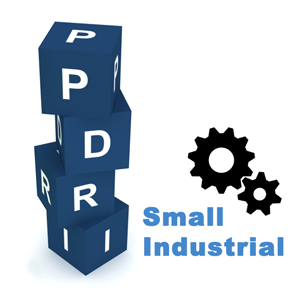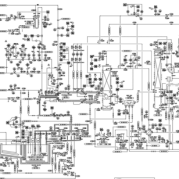When it comes to mixing O&M teams and capital project teams how can you promote goal alignment and performance focus?
In industrial facilities, small capital projects (under $10M) are largely undertaken to address compliance requirements (health, safety or environmental), planned equipment replacement, or plant modifications that will achieve a process improvement or de-bottlenecking. This means Operations or Maintenance are often the project sponsors for small projects.
The Challenge
One of the biggest challenges facing small projects is facilitating productive communication around scope requirements as a project transitions from an ‘identified project’ by Operations & Maintenance (O&M), to an approved project, managed by a project manager or project delivery team.
O&M teams are usually under tremendous pressure and time constraints. They appreciate that a project team needs clear scope requirements, but often find it difficult to know just how, or in what format to best communicate.
Small capital projects are quite different from routine maintenance activities so communication gaps can be a serious problem. Small capital projects:
[list type=”check”]
- have more stakeholders; along with operations and maintenance, there’s project management, engineering, external consultants and contractors, and sometimes more.
- require careful coordination with existing operations, and other ongoing projects at the same site.
- are funded out of a capital budget, and usually have a different approval process.[/list]
So what can be done to align project teams and O&M so that everyone achieves their goals?
PDRI for Small Industrial Projects
One of the best methods for aligning stakeholders is to take a systematic approach to defining scope. The Project Definition Rating Index (PDRI) is an excellent methodology for facilitating communication around project scope requirements and making sure all stakeholders have a voice. PDRI is a collaborative process that involves all major stakeholders working together to identify gaps in scope. Once these gaps are identified, project teams can take appropriate actions to reduce risk during front end planning.
Traditionally PDRI has been viewed as a great process for large and mega projects, but not appropriate for our typical small projects in an industrial facility. PDRI was a lot like using a sledge hammer to drive a tack – overkill!
The new PDRI template
This year, the Construction Industry Institute (CII) published a PDRI template to address the specific scope definition needs of small industrial projects. We’ve had the pleasure of working with several clients to introduce this PDRI template and early results are showing tremendous results as a way to bridge the gap between the project sponsor (Operations & Maintenance) and the project manager.
How does PDRI help bridge the communication gap?
The ideal time to conduct a first PDRI session is when a project manager has been assigned, and the project is transitioning from O&M to the project team. Clear definition and communication of what is in and out of scope is critical. A PDRI session can be conducted as part of the project kickoff meeting, and requires no more than two-hours.
Of the 41 elements in the PDRI for Small Projects template, we’ve seen the most productive discussions with O&M come from the review of the checklists for these scope elements:
1. Project Objectives Statement
This element focuses on ensuring there is a clear understanding of why a project is being performed, and what its value is to the organization. This discussion helps project teams gain clarity on the primary business drivers, especially with reliability-driven projects.
2. Project Strategy & Scope of Work
The focus is on development of a scope of work that supports the project objectives. When discussed at the project kickoff, it helps in early identification of all the interface points and coordination efforts that will be required with operations, owner staff, and other projects that are ongoing at the site.
3. Piping & Instrumentation Diagrams (P&IDs)
An open discussion with O&M on the their first-hand experience with the accuracy of existing P&IDs can be very informative for the project team. Accuracy of as-built diagrams is one of the biggest risk areas in industrial renovation and revamp projects.
4. Shutdown/Turnaround Requirements
This is often the first discussion the stakeholders have had on the scope of work that can be completed prior to, during, and after any required shutdown/turnaround for the project. A better upfront understanding of the project’s potential impact on operating facilities, and hazardous working conditions for workers helps the project team better develop the project scope.
5. Project Site Assessment
Even before site assessment activities have been initiated, operations and maintenance can provide tremendous insight on existing conditions that they know could be an issue. We’ve captured more comments from this element than any other element so far. This discussion goes a long way to eliminating late surprises in the planning process.
Summary
If you’re looking for ways to align communications between Operations & Maintenance and your project teams, PDRI for Small Projects is worth checking out. It offers an opportunity to adopt a mature process for assessing scope definition (20 years of history) using a fit-for-purpose PDRI template for small industrial projects.
Want to Learn More?
Valency is hosting a series of one-day workshops on PDRI for Small Industrial Projects, with our next workshop on December 10, 2015 in Waterloo, ON. Participants will benefit from lessons learned on how to use PDRI to achieve increased team alignment, identify gaps and risks, and objectively measure the degree of scope definition.
Check-out Valency’s upcoming courses page for more details.



